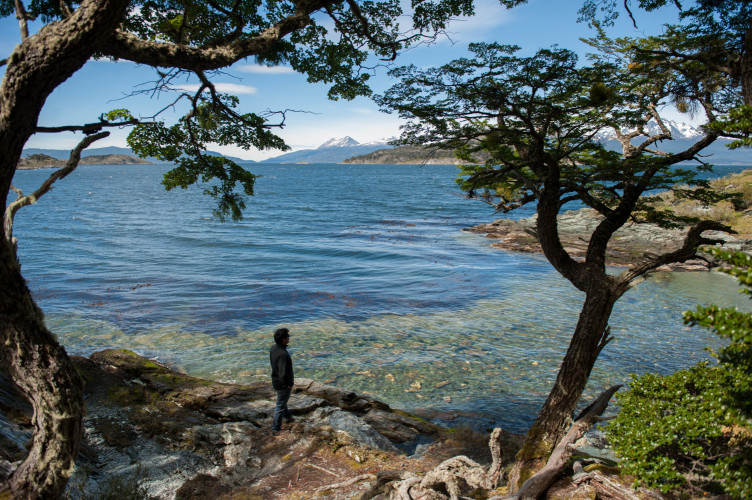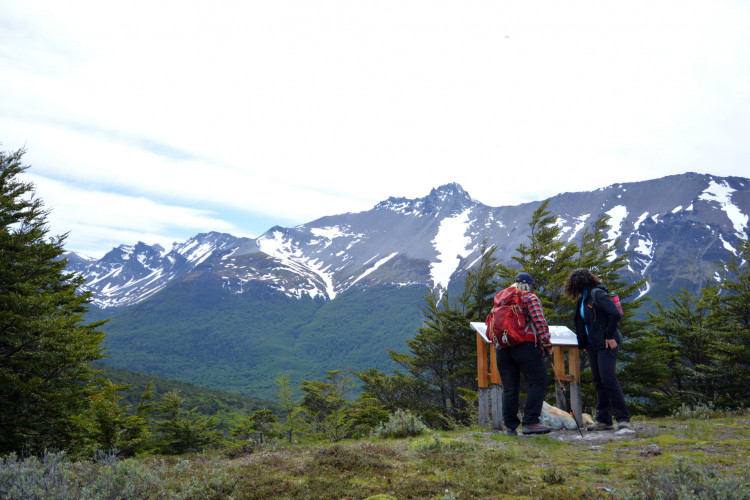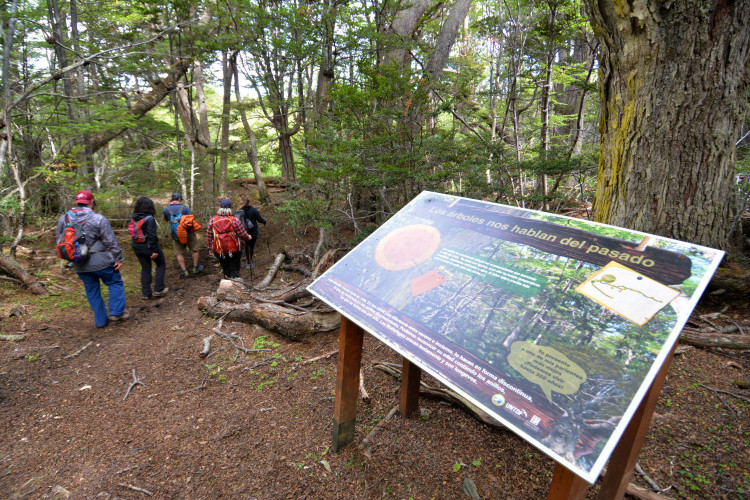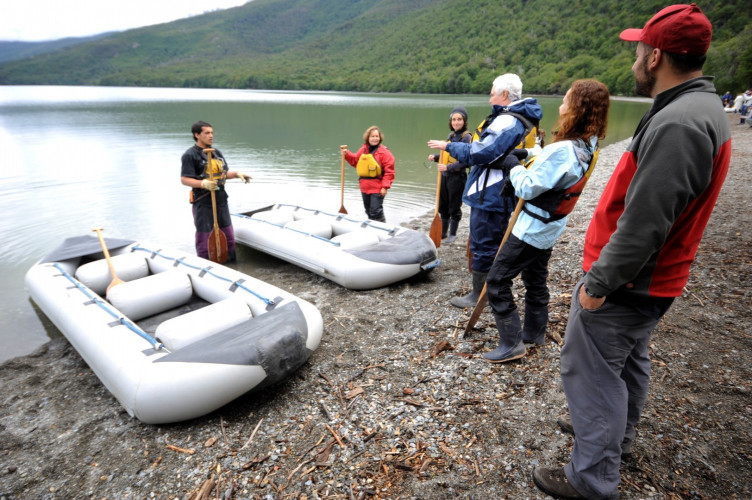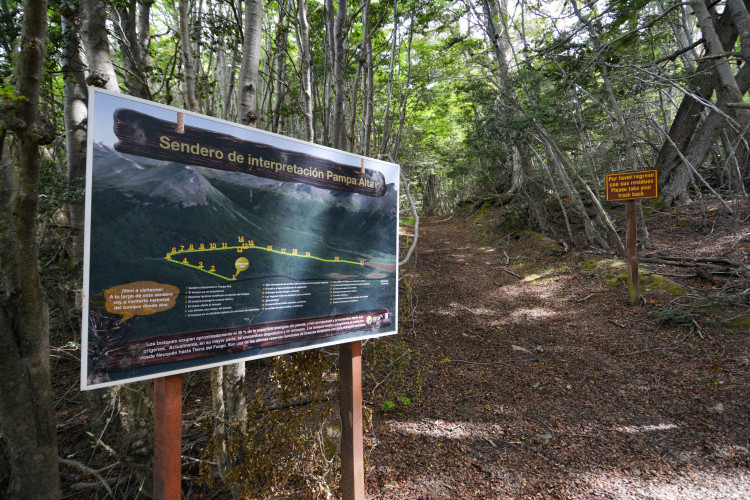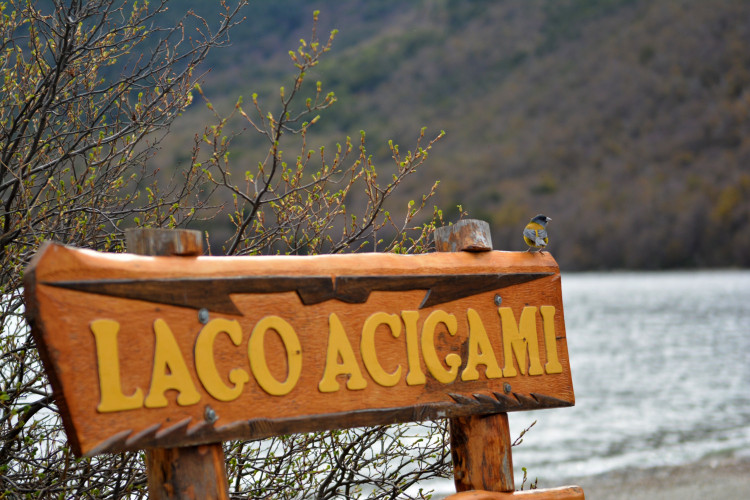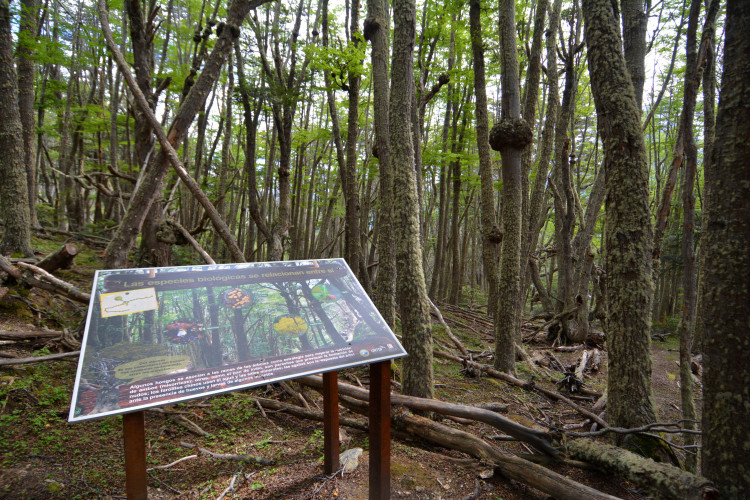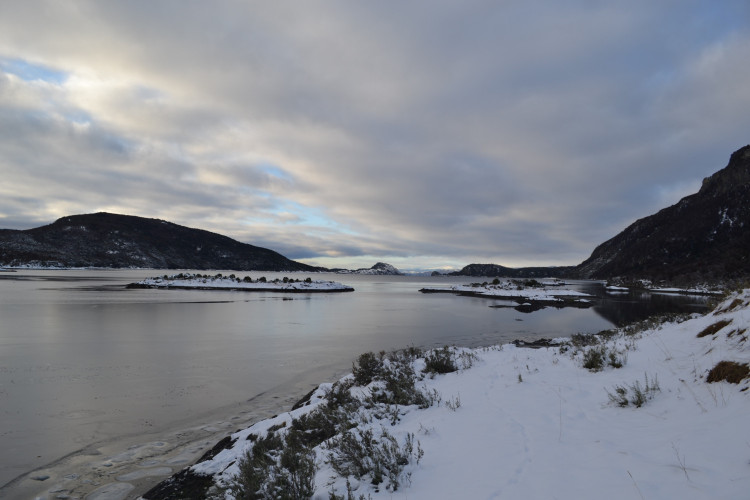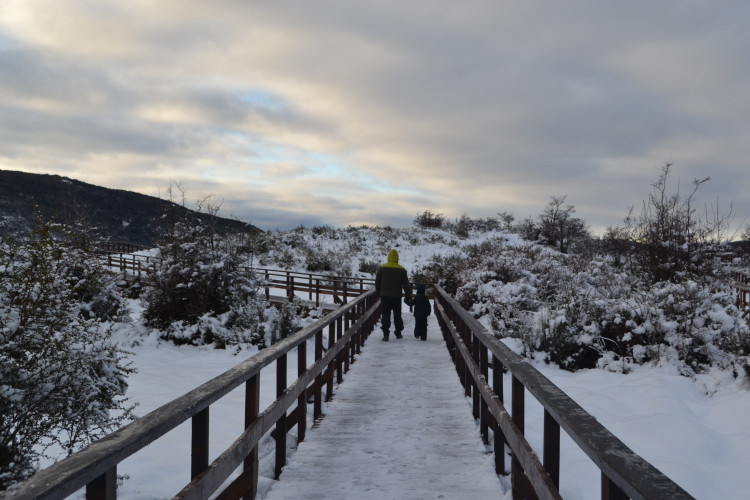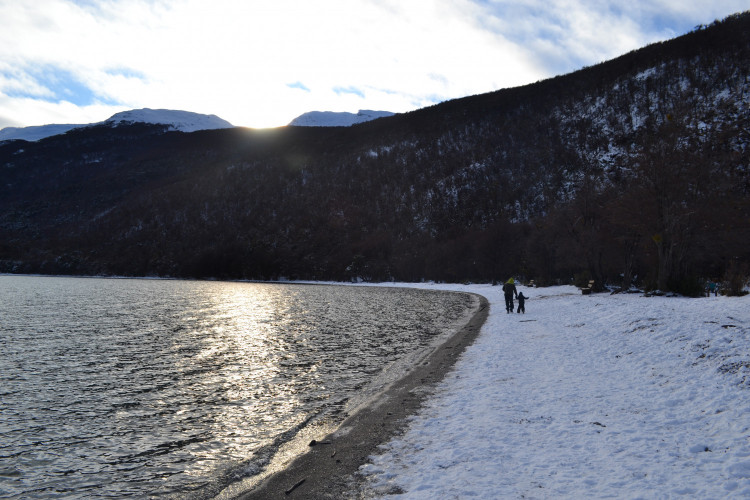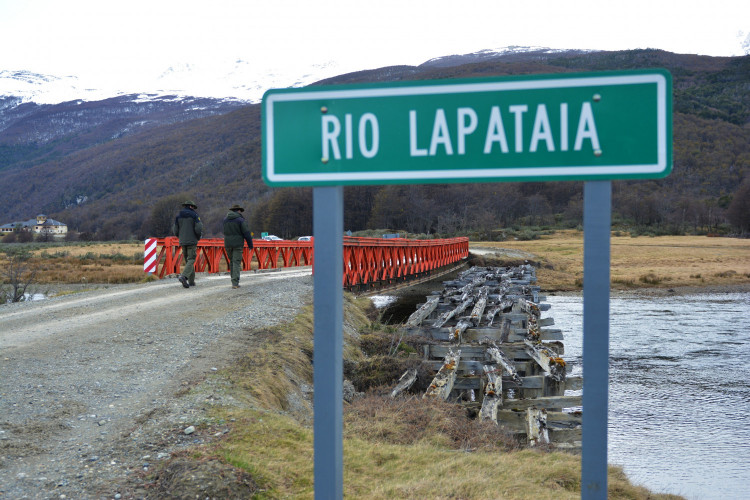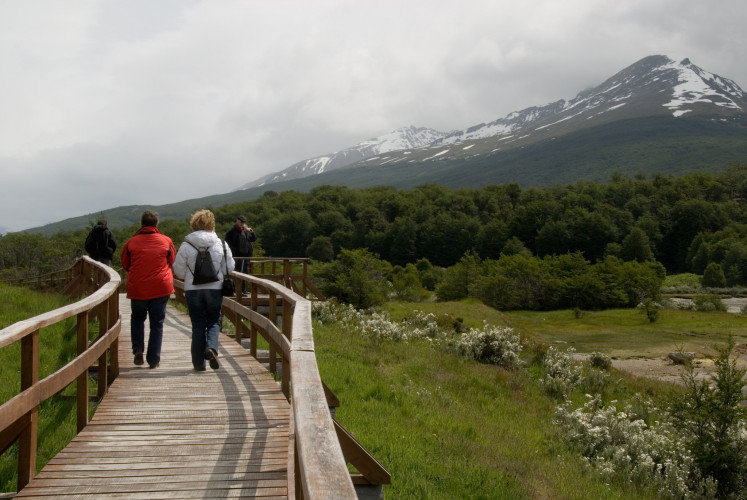Located only a few kilometers from Ushuaia, the Tierra del Fuego National Park is a natural reserve of 63.000 hectares of sub-Antarctic landscape, with deep valleys, dense forests, peat bogs, a coastline, and a magnificent lake located between two mountain ranges. Discover the unforgettable experience of traveling through the unique nature of the End of the World.
When
Tierra del Fuego National Park is located 12 kilometers west of Ushuaia, along National Route 3. Founded in 1960, it is the only national park in Argentina located between the mountains and the sea, since one of its ends borders the southwest coast of the Beagle Channel.
This southern reserve is home to native species such as the red fox and birds such as the caranca, the cauquén marino, the black-browed albatross, the southern steamer duck, the giant woodpecker and the Patagonian thrush , among others. The dense forests are made up of lengas, cherry trees, cinnamon trees and ñires. During autumn, the foliage of these trees creates an unforgettable postcard of red, gold and green colors.
Its peculiar geography, which combines the maritime environment with the Andean mountain range, displays a captivating scenery. The serene beauty of Lake Acigami/Roca, called Acigami by the natives of the island, invites you to sit on its shore and enjoy the sound of the waves. Next to the lake, there is a camping area, and on the right bank, there is a path that leads to the Milestone 24 , which marks the territorial boundary with Chile. Another scenic spot is Lapataia Bay , where you will find the sign that marks the end of National Route 3.
The activities allowed in this reserve are hiking, guided canoeing and fishing. For trekking lovers, the park is an ideal option, since it has a network of signposted trails of about 40 kilometers that vary in length and degree of difficulty. Below, you can check the listing of trails open to the public.
Low Difficulty Hikes
Paseo de la Isla : this trail runs along the shores of the Lapataia and Ovando rivers, from where you can see the Cormorant Archipelago. Approximate length: 800 meters.
Mirador Trail : Crossing the Park through the forest of lengas and coihues, it skirts the bottom of Lapataia Bay until reaching the Beagle Channel. The panoramic view is splendid.
Castorera Trail: It is reached by Route Nº 3 going up the course of Los Castores creek on its right bank. In this area you can observe the impact that beavers have caused in the environment.
Turbal Trail: This is an easy 400 meters path that leads to Lapataia Bay. On the way through the lenga and coihue forest, you can see an abandoned beaver dam.
Laguna Negra Trail : Another low difficulty path that leads to a lagoon located south of Lake Roca. Its name (black lagoon) comes from the dark coloration of its waters due to the effect of the peat.
Baliza Trail : In Lapataia Bay there is a fork to this trail. After a short walk along the forest, you will see a beaver dam. Following the path, you will get to the coastline of the Beagle Channel, where a beacon marks the end of the trail.
Medium Difficulty Hikes
Coastal Path: It begins at Ensenada Bay, bordering the coast of the Beagle Channel and ends at the crossing of Route 3, near Lake Roca. The trail is 8 kilometers long. For more information click HERE
Hito XXIV Trail: this trail borders the northern shore of Lake Roca and leads to the international border with Chile. The trail goes through dense lenga forests and from the shore of the lake you can enjoy magnificent views of the surrounding mountains.
High Difficulty Hikes
Pampa Alta Trail : this trail begins in the area of Rio Pipo, near the End of the World Train railway. It goes through a dense forest that leads to Pampa Alta, where you can see the Beagle Channel. It can be accessed from the Bahia Ensenada camping site going up the Piloto stream (long option: 4.9 km.) or from National Route 3 (short option 3.7 km.), down the path that joins the road to Río Pipo.
Cerro Guanaco: From the summit of this mountain (970 meters high) there are magnificent panoramic views of the Andes mountain range and the Beagle Channel. Taking the path that leads to Hito XXIV, after a short walk you will find a fork, where a sign on the right marks the beginning of the trail. This is a demanding hike, with a steep climb through the forest and damp muddy areas. The total length is 8 kilometers (round trip) and due to its degree of difficulty, it is mandatory to register at the Visitor's Center and the National Park Office before starting this hike. This trail is only open during the summer season (from November to March). For more information click HERE
In order for you to enjoy your experience in this protected area, we invite you to plan your trip and take the necessary precautions so that your visit does not have a negative impact on the natural environment.
To find information about services, rates, schedules and recommendations for visitors to Tierra del Fuego National Park, click HERE.
Información importante: Nos encontramos actualizando información. Por consultas relacionadas a operadores o prestadores habilitados contactarse al correo serviciosturisticos@infuetur.gob.ar
Puede adquirir esta actividad a través de los siguientes prestadores
Aluen
Austral Adventure
Calaio Viajes y Turismo
Explorando el fin del Mundo
Explore Tierra del Fuego
Glam Transfers
San Martin 350Kami Turismo
Lasifashaj Turismo
LCE Viajes
Rio Milna
Sur Travel Ushuaia
Tekenika
Transporte Eliel
Transporte Ona
Bahía Ensenada 580Ushuaia Elite
Gobernador Godoy 36, 3º 15Ushuaia MG Turismo
Ushuaia PM
Vive Patagonia
Xplor Turismo
También puede realizar esta actividad, contratándola a través de las Agencias de viajes y turismo habilitadas.
Exploring the National Park
Located only a few kilometers from Ushuaia, the Tierra del Fuego National Park is a natural reserve of 63.000 hectares of sub-Antarctic landscape, with deep valleys, dense forests, peat bogs, a coastline, and a magnificent lake located between two mountain ranges. Discover the unforgettable experience of traveling through the unique nature of the End of the World.
When
Tierra del Fuego National Park is located 12 kilometers west of Ushuaia, along National Route 3. Founded in 1960, it is the only national park in Argentina located between the mountains and the sea, since one of its ends borders the southwest coast of the Beagle Channel.
This southern reserve is home to native species such as the red fox and birds such as the caranca, the cauquén marino, the black-browed albatross, the southern steamer duck, the giant woodpecker and the Patagonian thrush , among others. The dense forests are made up of lengas, cherry trees, cinnamon trees and ñires. During autumn, the foliage of these trees creates an unforgettable postcard of red, gold and green colors.
Its peculiar geography, which combines the maritime environment with the Andean mountain range, displays a captivating scenery. The serene beauty of Lake Acigami/Roca, called Acigami by the natives of the island, invites you to sit on its shore and enjoy the sound of the waves. Next to the lake, there is a camping area, and on the right bank, there is a path that leads to the Milestone 24 , which marks the territorial boundary with Chile. Another scenic spot is Lapataia Bay , where you will find the sign that marks the end of National Route 3.
The activities allowed in this reserve are hiking, guided canoeing and fishing. For trekking lovers, the park is an ideal option, since it has a network of signposted trails of about 40 kilometers that vary in length and degree of difficulty. Below, you can check the listing of trails open to the public.
Low Difficulty Hikes
Paseo de la Isla : this trail runs along the shores of the Lapataia and Ovando rivers, from where you can see the Cormorant Archipelago. Approximate length: 800 meters.
Mirador Trail : Crossing the Park through the forest of lengas and coihues, it skirts the bottom of Lapataia Bay until reaching the Beagle Channel. The panoramic view is splendid.
Castorera Trail: It is reached by Route Nº 3 going up the course of Los Castores creek on its right bank. In this area you can observe the impact that beavers have caused in the environment.
Turbal Trail: This is an easy 400 meters path that leads to Lapataia Bay. On the way through the lenga and coihue forest, you can see an abandoned beaver dam.
Laguna Negra Trail : Another low difficulty path that leads to a lagoon located south of Lake Roca. Its name (black lagoon) comes from the dark coloration of its waters due to the effect of the peat.
Baliza Trail : In Lapataia Bay there is a fork to this trail. After a short walk along the forest, you will see a beaver dam. Following the path, you will get to the coastline of the Beagle Channel, where a beacon marks the end of the trail.
Medium Difficulty Hikes
Coastal Path: It begins at Ensenada Bay, bordering the coast of the Beagle Channel and ends at the crossing of Route 3, near Lake Roca. The trail is 8 kilometers long. For more information click HERE
Hito XXIV Trail: this trail borders the northern shore of Lake Roca and leads to the international border with Chile. The trail goes through dense lenga forests and from the shore of the lake you can enjoy magnificent views of the surrounding mountains.
High Difficulty Hikes
Pampa Alta Trail : this trail begins in the area of Rio Pipo, near the End of the World Train railway. It goes through a dense forest that leads to Pampa Alta, where you can see the Beagle Channel. It can be accessed from the Bahia Ensenada camping site going up the Piloto stream (long option: 4.9 km.) or from National Route 3 (short option 3.7 km.), down the path that joins the road to Río Pipo.
Cerro Guanaco: From the summit of this mountain (970 meters high) there are magnificent panoramic views of the Andes mountain range and the Beagle Channel. Taking the path that leads to Hito XXIV, after a short walk you will find a fork, where a sign on the right marks the beginning of the trail. This is a demanding hike, with a steep climb through the forest and damp muddy areas. The total length is 8 kilometers (round trip) and due to its degree of difficulty, it is mandatory to register at the Visitor's Center and the National Park Office before starting this hike. This trail is only open during the summer season (from November to March). For more information click HERE
In order for you to enjoy your experience in this protected area, we invite you to plan your trip and take the necessary precautions so that your visit does not have a negative impact on the natural environment.
To find information about services, rates, schedules and recommendations for visitors to Tierra del Fuego National Park, click HERE.

